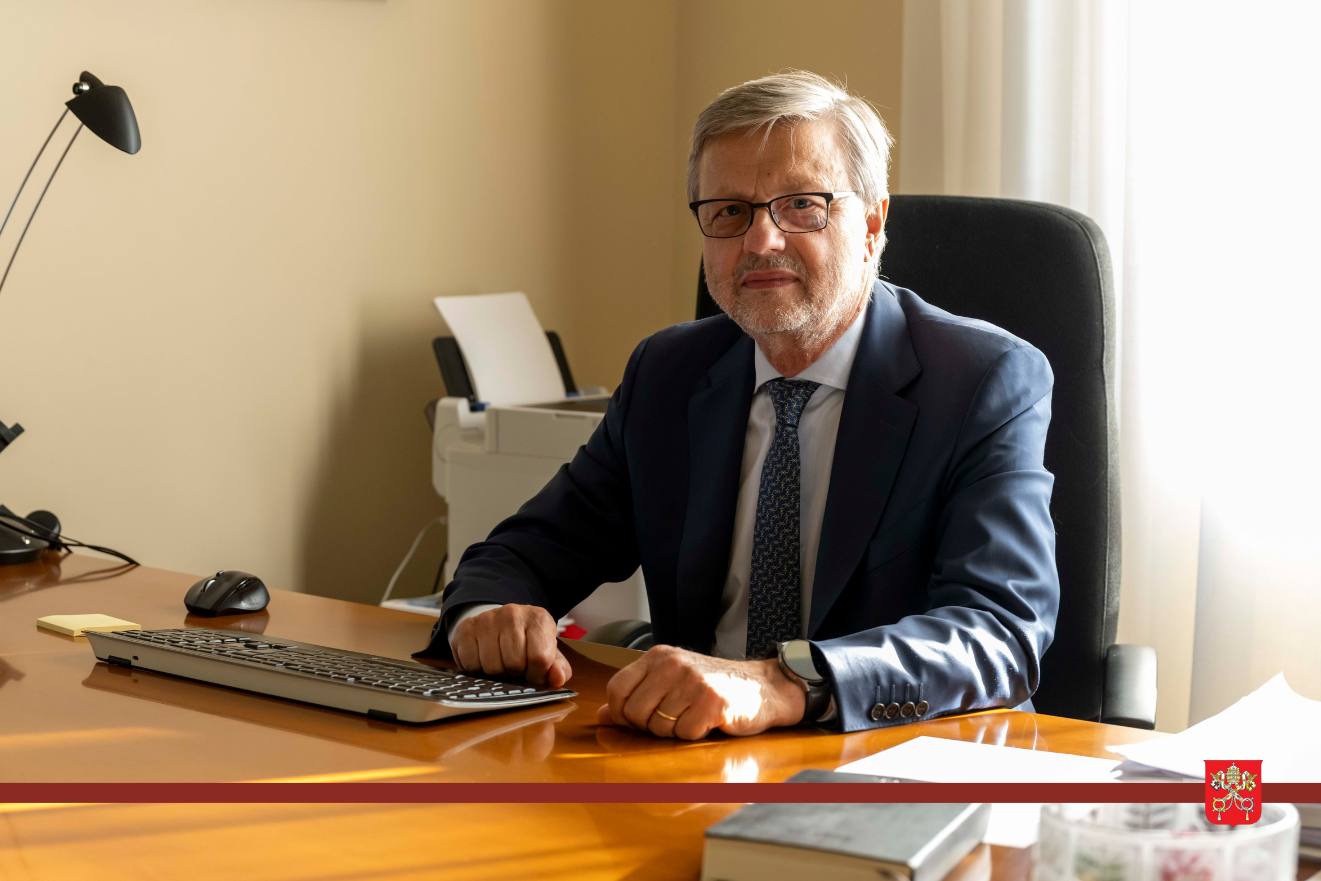An interview with Professor Andrea Arcangeli, Director of the Directorate of Health and Hygiene

Two first aid stations for the Jubilee
Two new first aid stations have been opened to meet the demands of the increase in the numbers of pilgrims and visitors during the Jubilee Year. One station is located inside Saint Peter’s Basilica, and the other in the Vatican Museums. The first aid stations were promoted and organized by the Governorate of Vatican City State’s Directorate of Health and Hygiene, as the Director of the Directorate, Professor Andrea Arcangeli, explains in the following interview.
How did the project arise?
The project was born in view of the large influx of people expected to visit both the Basilica of Saint Peter and the Vatican Museums for the Jubilee Year, starting with the days preceding the opening of the Holy Door. The Directorate of Health and Hygiene wanted to open the first aid stations in the areas that experienced the greatest influx of people. It was launched on Monday,16 December, and will be operational until the end of the Jubilee Year. A similar project had also been put in place for the Jubilee of the Year 2000.
Who organized the inititative?
The Directorate, represented by myself as Director, and Dr. Luigi Carbone as Vice Director, presented the project to the Bodies of Government, highlighting the importance of ensuring a first aid service, and it was approved.
The projects involves 23 medical doctors and 20 nurses, professionals with great experience, who carry out their main work in hospitals and emergency rooms.
What kind of background do the doctors have?
In an effort to guarantee the opening of these first aid stations, the Directorate of Health and Hygiene decided to integrate currently available resources by hiring doctors and nurses with an expertise in emergency services, offering them fixed term contracts. The doctors are mostly resuscitation anaesthesiologists and emergency doctors from hospitals such as Policlinico Gemelli, Gemelli Isola, San Camillo and San Carlo di Nancy. This medical team will be available daily on rotation to ensure a constant presence, and will be equipped with radio-transmitters linked to the emergency number, 112, which will provide them with information on the type of emergency required and the location of the intervention.
Where will they be placed?
Firstly inside Saint Peter’s Basilica, where we are expecting a large number of visits from pilgrims who will come to Rome. There will be a medical team at the first aid station every day of the week, during the Basilica’s opening hours.
The team is composed of one doctor and one nurse, who will be equipped with a backpack containing all the supplies required to provide first aid in emergency situations anywhere inside the Basilica.
The Basilica includes the cupola, where albeit rarely, the most complex emergency procedures occur. In these cases, the intervention of the Fire Brigade is indispensable in carrying patients along the steep stairs that lead to the top.
How do interventions take place?
When the medical team is called by 112, it immediately goes to the site of the emergency. After a quick evaluation of a patient’s conditions, the necessary first aid is administered. If the intervention proves sufficient to solve the problem, the pilgrim can resume his or her visit. If not, the patient is accompanied to the exit, to access a taxi to return to their hotel. In cases where hospitalization is required, the Medical Guard of the Directorate of Health and Hygiene is contacted, who then dispatches an ambulance to ensure the patient’s transfer to a hospital emergency centre.
What are the illnesses that require your assistance?
The most frequent illnesses we have seen during visits are small orthopaedic traumas, such as sprains or wounds caused by falls. During the summer, there are cases of fainting spells, heat stroke and drops in blood pressure. In some cases, there are more serious emergencies such as cardiac or respiratory difficulties, often occurring to people affected by chronic pathologies, who may experience flareups.
Have you also considered the Vatican Museums?
We have already carried out a similar project in the Vatican Museums, which ran from April to mid-October of last year, during the hotter months of the year. It was an experiment which gave good results, convincing us of the importance of this service. However, in the context of such a vast area, there was the need to integrate the one doctor and one nurse team, with a healthcare worker, who is crucial in assisting with more complex operations, such as transporting patients and immobilizing them, if necessary.
Are there any other first aid stations?
There is already an operational first aid station in Saint Peter’s Square, run by volunteer doctors and nurses of the Sovereign Military Order of Malta, who cooperate with us to ensure a highly qualified and valuable service.
First aid stations will also be installed in the Papal Basilicas and will be equipped and organized by our Directorate, in order to efficiently respond to potential emergencies. These stations will be run on rotation by doctors and nurses of the Sovereign Order of Malta, who come from different countries in the world. This organizational structure was inspired by the experience gained during the Jubilees of 2000 and 2015, which proved to be highly functional and useful.





